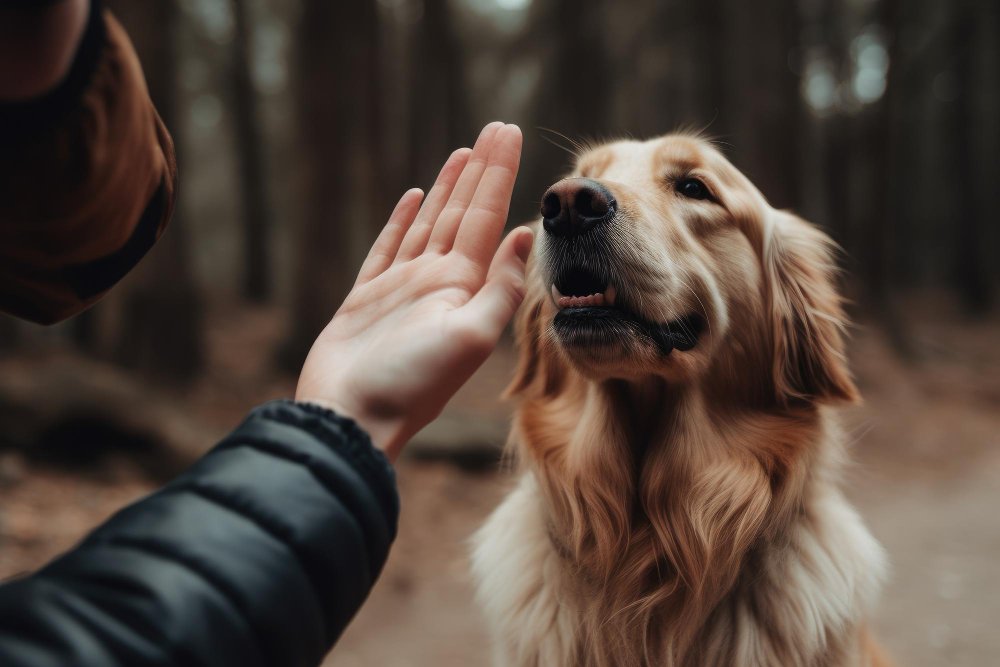Is your furry friend deaf or hearing-impaired? Don’t worry, because there are plenty of training tips and techniques available to help you effectively communicate with your dog. Whether your canine companion was born with hearing loss or developed it over time, understanding their unique needs is crucial for successful training. In this article, we will explore some valuable training tips for deaf or hearing-impaired dogs, allowing you to strengthen your bond and enhance their obedience skills.
Training Tips For Deaf Or Hearing-Impaired Dogs
Having a deaf or hearing-impaired dog can present unique challenges, but with the right training techniques, you can still have a well-behaved and happy furry companion. Recognizing the symptoms of hearing loss in dogs is the first step towards understanding their needs and providing them with an appropriate environment.
Recognizing Symptoms of Hearing Loss in Dogs
Recognizing the symptoms of hearing loss in dogs is crucial in order to address their specific needs. One common sign is unresponsiveness to sounds, such as not reacting when their name is called or failing to respond to verbal commands. Behavioral changes, such as increased startle response or heightened dependence on visual cues, can also indicate hearing impairment. Additionally, physical indications like ear infections or abnormalities should not be overlooked as they can contribute to hearing loss.
Understanding Different Types of Hearing Loss in Dogs
There are two main types of hearing loss in dogs: conductive hearing loss and sensorineural hearing loss. Conductive hearing loss occurs when there is a problem in the outer or middle ear that prevents sound from reaching the inner ear. Sensorineural hearing loss, on the other hand, occurs when there is a problem with the inner ear, auditory nerve, or brain processing. Understanding the type of hearing loss your dog has can help determine the most effective training methods.
Creating a Safe Environment for Deaf Dogs
Creating a safe environment for deaf dogs is essential to their well-being and prevents unnecessary accidents or anxiety. Eliminating noise distractions, such as loud appliances or excessive barking, can help reduce stress for your furry friend. Securing the living area by ensuring fences are sturdy and gates are securely closed will prevent them from wandering off and getting into dangerous situations. Additionally, using visual cues such as signs or specific colored objects can aid in their safety by directing their attention to potential hazards.
Developing Communication Techniques for Deaf Dogs
While deaf dogs may not be able to understand verbal commands, developing effective communication techniques can bridge the gap between you and your furry companion. Establishing a communication vocabulary that includes hand signs and specific gestures can help convey your desires and expectations. Using flashlights or handheld lights as a way to gain your dog’s attention or direct their focus is another effective method. Additionally, utilizing vibrations or touch can help create a unique means of communication between you and your dog.
Using Visual Signals for Training
Visual signals are an invaluable tool for training deaf dogs. Start by teaching simple hand signals for basic commands such as sit, stay, or lie down. Pair these visual signals with verbal commands to help reinforce understanding. It is important to be consistent and patient when using visual signals, as it may take time for your dog to grasp the meaning behind each gesture. Reinforce their correct response with treats or rewards to encourage further learning.
Incorporating Hand Signals in Training
Incorporating hand signals into training routines adds another layer of communication that deaf dogs can easily understand. Begin by training basic commands using clear and distinct hand gestures that are easy for your dog to see and differentiate. Once your furry friend has mastered the basics, you can gradually increase complexity with advanced hand signals. Consistency and repetition are key when utilizing hand signals, as it helps your dog build confidence and understanding.
Utilizing Vibrations as a Training Tool
Vibrations can be a powerful training tool for deaf dogs, as they provide a tactile sensation that can be easily detected. Using vibrating collars that are specifically designed for canine training can help facilitate communication. Teach your dog to associate vibrations with specific commands or cues by providing a gentle vibration when giving the command. Gradually, you can fade out the use of vibrations as your dog becomes more proficient in understanding visual signals.
Using Positive Reinforcement in Training
Positive reinforcement is an effective training method for all dogs, including deaf or hearing-impaired ones. Rewarding your furry companion with treats, verbal praise, or playtime immediately after they respond correctly to a command helps reinforce desired behaviors. Clicker training, which involves using a clicking sound to signal a correct behavior, can also be easily adapted for deaf dogs by replacing the sound with visual cues such as a flash of light or a thumbs-up sign. Consistency and timing are crucial when using positive reinforcement, as it helps your dog associate the reward with the correct action.
Establishing a Routine for Training
Establishing a training routine is essential for deaf dogs to succeed in their training journey. Consistency is key, so it is important to designate specific times for training sessions and stick to them. Keep training sessions short and engaging to maintain your dog’s focus and prevent boredom or frustration. By incorporating regular training into their daily routine, you can help develop a strong bond with your furry companion and ensure that they continue to progress in their training.
Seeking Professional Help for Training Challenges
If you encounter challenges or feel overwhelmed during the training process, seeking professional help is always a viable option. Consulting a professional dog trainer who has experience working with deaf or hearing-impaired dogs can provide valuable guidance tailored to your dog’s specific needs. A canine behaviorist, who specializes in understanding dog behavior, can also offer insight and support. Additionally, considering assistive devices such as vibrating collars or specialized training aids may provide additional assistance during the training process.
In conclusion, training deaf or hearing-impaired dogs requires patience, consistency, and the use of effective communication techniques. By recognizing the symptoms of hearing loss, understanding the different types of hearing loss, creating a safe environment, and utilizing visual signals, hand signals, vibrations, and positive reinforcement, you can help your furry friend thrive and enjoy a fulfilling life. Remember, seeking professional help when needed ensures that your dog receives the best possible training and care. With these training tips, you can embark on a rewarding journey with your deaf or hearing-impaired dog and create a strong bond that will last a lifetime.


